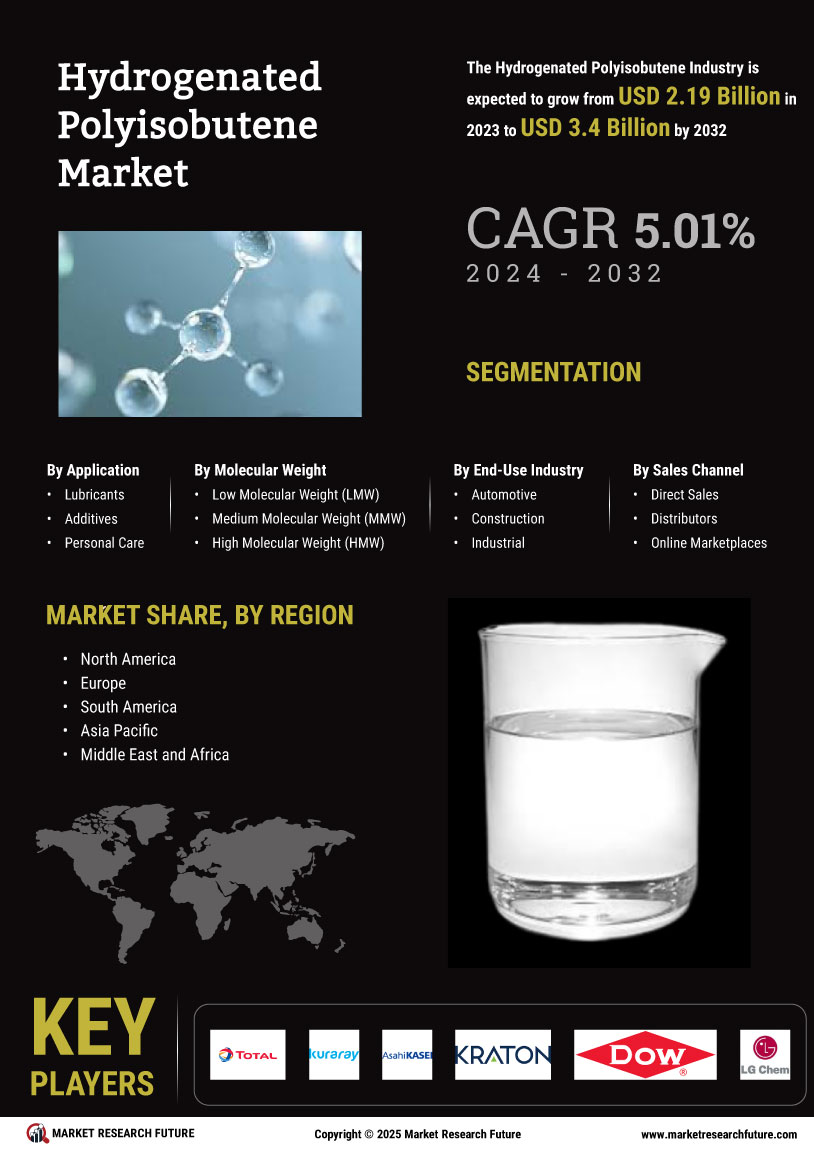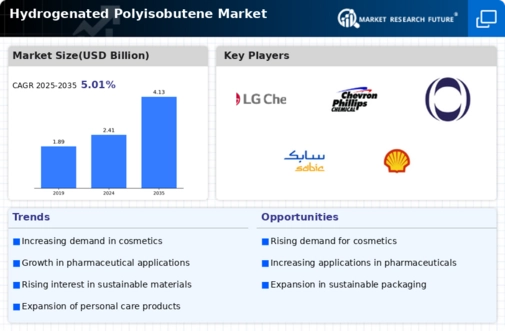Rising Demand in Cosmetics
The Global Hydrogenated Polyisobutene Market Industry experiences a notable surge in demand driven by the cosmetics sector. Hydrogenated polyisobutene is increasingly utilized in formulations for lip care products, moisturizers, and sunscreens due to its emollient properties and ability to enhance texture. As consumers gravitate towards high-quality cosmetic products, the market is projected to reach 2.41 USD Billion in 2024, reflecting a robust growth trajectory. This trend is likely to continue as the industry adapts to evolving consumer preferences for sustainable and effective ingredients, positioning hydrogenated polyisobutene as a key component in premium formulations.
Market Trends and Projections
Growth in Personal Care Products
The Global Hydrogenated Polyisobutene Market Industry is significantly influenced by the expansion of personal care products. With an increasing focus on skin health and beauty, manufacturers are incorporating hydrogenated polyisobutene for its moisturizing and skin-conditioning benefits. This ingredient is particularly valued for its ability to provide a non-greasy feel while enhancing product stability. As the personal care market evolves, the demand for hydrogenated polyisobutene is expected to grow, contributing to a projected market value of 4.13 USD Billion by 2035. This growth underscores the ingredient's versatility and importance in formulating effective personal care solutions.
Emerging Markets and Consumer Awareness
The Global Hydrogenated Polyisobutene Market Industry is increasingly influenced by emerging markets and rising consumer awareness regarding ingredient safety and efficacy. As consumers in developing regions become more informed about cosmetic ingredients, the demand for high-quality products containing hydrogenated polyisobutene is expected to rise. This trend is particularly evident in Asia-Pacific and Latin America, where the beauty and personal care sectors are expanding rapidly. The growing awareness of the benefits of hydrogenated polyisobutene is likely to drive market growth, contributing to the overall expansion of the industry.
Regulatory Support for Safe Ingredients
The Global Hydrogenated Polyisobutene Market Industry benefits from increasing regulatory support for safe and effective cosmetic ingredients. Regulatory bodies are emphasizing the need for transparency and safety in product formulations, which encourages manufacturers to adopt hydrogenated polyisobutene due to its favorable safety profile. This regulatory landscape not only fosters consumer trust but also drives innovation in product development. As companies align with these regulations, the market is likely to witness sustained growth, further solidifying hydrogenated polyisobutene's position as a preferred ingredient in the formulation of safe and effective cosmetic products.
Technological Advancements in Formulation
The Global Hydrogenated Polyisobutene Market Industry is propelled by technological advancements in formulation techniques. Innovations in processing and formulation technologies allow for enhanced stability and performance of hydrogenated polyisobutene in various applications. These advancements enable manufacturers to create more effective and appealing products, catering to the evolving demands of consumers. As the industry embraces these technologies, the market is poised for growth, with a projected compound annual growth rate of 5.01% from 2025 to 2035. This growth reflects the industry's commitment to improving product efficacy and consumer satisfaction.







